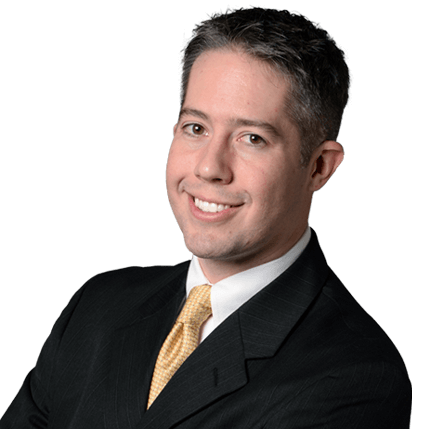Practical Aspects of Intellectual Property That You Should Know
July 2017
The Cutting Edge Magazine
Patrick Quinlan, Associate, breaks down the four basic areas of IP in his article "Practical Aspects of Intellectual Property That You Should Know," featured in the July 2017 issue of The Cutting Edge.
The Cutting Edge is a technical journal and trade magazine written and edited specifically for diecutters, diemakers and industry suppliers. The monthly publication includes technical articles and columns about developments in the industry to keep readers aware of current trends.
Read the full article below.
Practical Aspects of Intellectual Property That You Should Know
This is the first in a series intended to provide IADD members in the US with an overview of various types of intellectual property (IP), what they mean, how to procure them and how they can be used. There are four basic areas of IP: patents, trademarks, copyrights and trade secrets. Patents protect inventions, trademarks protect brands and copyrights protect expressions of ideas. Each of these types of IP can be registered with the government. Trade secrets are just that, secrets, and are not able to be registered.
Patents
Patents cover inventions such as new mechanical devices, manufacturing processes, ornamental product designs and even new species of plants. An example of an invention could be a new machine for cutting steel rule. The term of a patent is twenty years from the date of filing the application, which cannot be renewed. Patents are one of the most powerful types of IP, but also tend to be more difficult to procure. The holder of a patent has the right to stop anyone from practicing an invention that is covered by the patent. A patent is not required to sell a product. Nor does it give its owner the right to sell, as another party may have an overriding patent.
Obtaining a patent can be a long and relatively expensive process. The process begins with preparing a detailed description of the invention and filing an application for a patent with the US Patent and Trademark Office (USPTO). Once filed, there is a period of pendency when the Patent Office puts your application in the backlog of applications for review. That time can range from one to three years. Once examined, the USPTO usually finds at least one ground on which to reject the application and the applicant will have a chance to respond to the rejection. The rejections can often be resolved by working with the patent examiner; however, if the rejections cannot be resolved, then an appeal can be filed. If not satisfied with the result, the applicant can appeal further to the Court of Appeals for the Federal Circuit and possibly the Supreme Court, though such appeals are rare. There are a variety of procedural options for filing applications and responding to examiner rejections, many of which will be discussed in a later article focusing on patents.
Trademarks
Trademarks cover names, logos, brands or other identifications of the source of goods and services. An example trademark is the name Kodak. The holder of a trademark has the right to stop anyone from using a confusingly similar name, logo or brand for similar goods or services. A trademark may last into perpetuity as long as the owner of the mark continues to use the mark in connection with the goods and services, although the trademark registration is subject to renewal every ten years. The procedure for pro- curing a registered trademark is typically not as involved as it is for patents and usually takes less time.
The process begins with preparing and filing a trademark application. There are two basic types of trademark applications: use-based and intent-to-use. The Trademark Office will only issue registered trademarks to those who actually use a mark in connection with specified goods or services. An applicant has the option of filing an intent-to- use application, which means that the applicant has not yet actually used the subject mark in connection with goods or services, but has a bona fide intent to use the mark. The application will be examined similarly to a use-based application, but if the application is allowed, the mark will not become registered until the applicant shows that the mark is in use.
As with patents, a trademark application can be rejected on a number of grounds, e.g. likely confusion with an al- ready-registered mark. The applicant will have an opportunity to respond to the rejections, and if they are not resolved, the applicant can appeal. If ultimately rejected, it does not mean that the applicant is not allowed to use the mark, but the applicant will not have the added protections of federal registration, such as the ability to sue in federal court and presumptions of validity that favor the holder of a registered trademark.
Copyrights
Copyrights protect expressions of ideas such as music, literature and graphics. The owner of copyright has the exclusive right to do certain things with the subject of the copy- right, including reproducing the work, displaying the work publicly and creating derivative works. The term for a copy- right has changed throughout the years, but is currently the life of the author plus seventy years. A copyright exists automatically upon fixation in tangible form by the author. There is no requirement to register a copyright with the government; however, a copyright must be registered before an owner can pursue an infringement action in court. Registration of a copyright also has other benefits, such as a presumption of validity if registered within five years of publication, and the possibility of receiving statutory damages for an infringement if registered within three months after publication or prior to an infringement of the work. Otherwise, only actual damages and profits are available to the copyright owner.
The process for registering a copyright is not as involved as with patents and trademarks and is generally less expensive. The applicant must submit information about the work (e.g., type of work and when it was published) and ownership of the work (e.g., sole or joint ownership). A copy of the work must be deposited with the Library of Congress, which for many types of works may be in electronic form. Once submitted, the application will be examined in turn and is generally not rejected.
Trade Secrets
A trade secret is not a form of IP that can be registered. It exists as a secret that is valuable to its owner. An example of a trade secret is the formula for Pepsi. A trade secret may exist into perpetuity as long as it is kept secret. If someone (e.g., a former employee) misappropriates a trade secret, that person may be pursued for the resulting damages, but the information is no longer secret. Trade secrets are generally protected by restricting access and by agreements.
In subsequent articles, we will discuss more detailed aspects of the various areas of IP and how they are registered and used.
Patrick Quinlan is a patent and trademark attorney practicing in Buffalo, NY, USA with Hamilton, Brook, Smith & Reynolds, and P.C. of Boston, MA, USA. He is also the son of IADD member Patrick Quinlan of Channel Creasing Matrix, Inc. / CCM Die Supplies. Patrick can be reached at 617.607.5918 or by email at paq@hbsr.com.
This article is reproduced with permission from the International Association of Diecutting and Diemaking's monthly magazine, The Cutting Edge, July 2017.
The IADD is an international trade association serving diecutters, diemakers and industry suppliers worldwide. IADD provides conferences, educational and training programs, a monthly magazine, online resource library of 600+ technical articles, industry experts to answer technical questions, publications and training manuals, recommended specifications, online used equipment marketplace, videos and more. IADD also co-presents Odyssey, a bi-annual trade show and innovative concept in technical training featuring a hands-on Techshop where training programs come alive in an actual working diemaking and diecutting facility inside the exhibit area. Visit www.iadd.org or call 815.455.7519 for more information.




